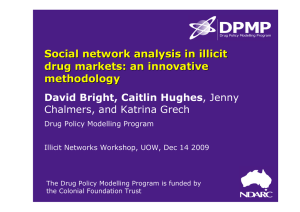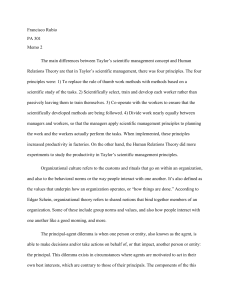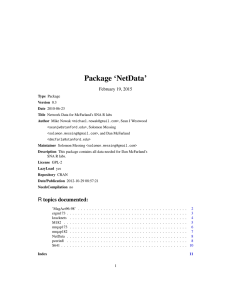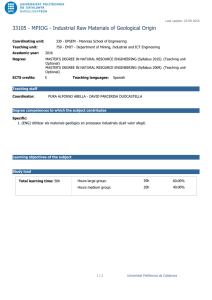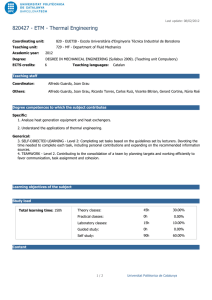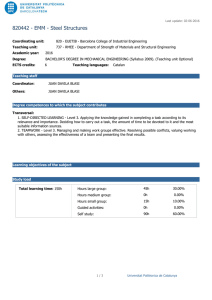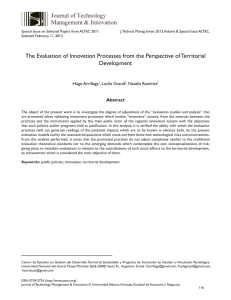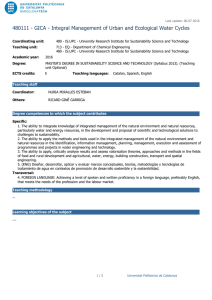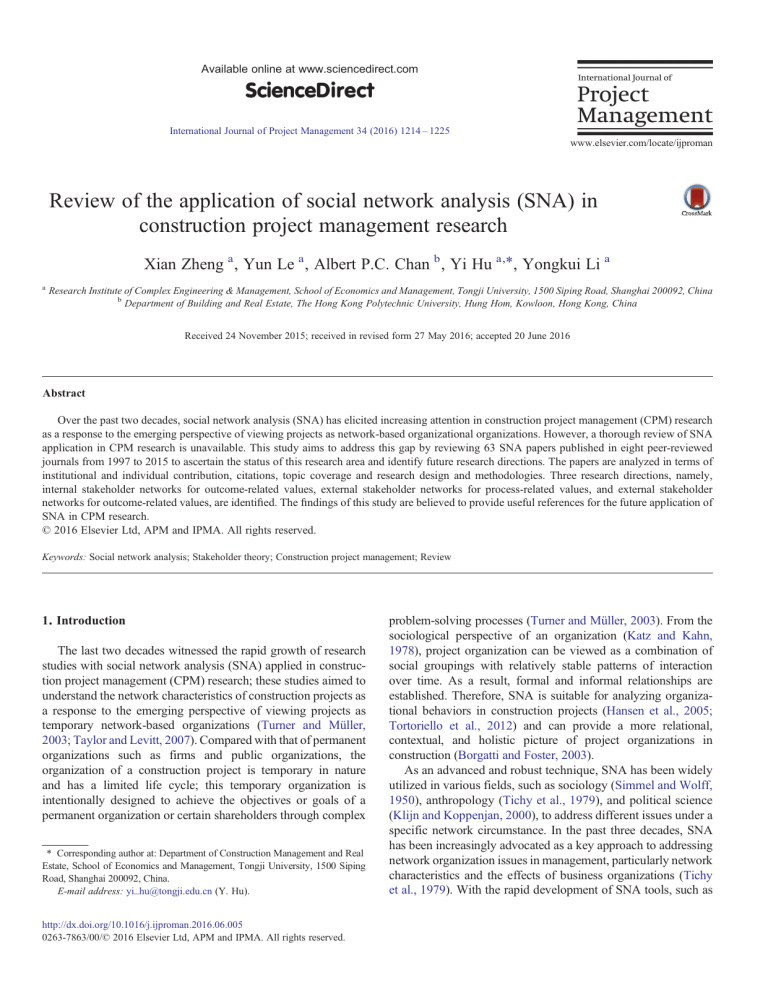
Available online at www.sciencedirect.com ScienceDirect International Journal of Project Management 34 (2016) 1214 – 1225 www.elsevier.com/locate/ijproman Review of the application of social network analysis (SNA) in construction project management research Xian Zheng a , Yun Le a , Albert P.C. Chan b , Yi Hu a,⁎, Yongkui Li a a Research Institute of Complex Engineering & Management, School of Economics and Management, Tongji University, 1500 Siping Road, Shanghai 200092, China b Department of Building and Real Estate, The Hong Kong Polytechnic University, Hung Hom, Kowloon, Hong Kong, China Received 24 November 2015; received in revised form 27 May 2016; accepted 20 June 2016 Abstract Over the past two decades, social network analysis (SNA) has elicited increasing attention in construction project management (CPM) research as a response to the emerging perspective of viewing projects as network-based organizational organizations. However, a thorough review of SNA application in CPM research is unavailable. This study aims to address this gap by reviewing 63 SNA papers published in eight peer-reviewed journals from 1997 to 2015 to ascertain the status of this research area and identify future research directions. The papers are analyzed in terms of institutional and individual contribution, citations, topic coverage and research design and methodologies. Three research directions, namely, internal stakeholder networks for outcome-related values, external stakeholder networks for process-related values, and external stakeholder networks for outcome-related values, are identified. The findings of this study are believed to provide useful references for the future application of SNA in CPM research. © 2016 Elsevier Ltd, APM and IPMA. All rights reserved. Keywords: Social network analysis; Stakeholder theory; Construction project management; Review 1. Introduction The last two decades witnessed the rapid growth of research studies with social network analysis (SNA) applied in construction project management (CPM) research; these studies aimed to understand the network characteristics of construction projects as a response to the emerging perspective of viewing projects as temporary network-based organizations (Turner and Müller, 2003; Taylor and Levitt, 2007). Compared with that of permanent organizations such as firms and public organizations, the organization of a construction project is temporary in nature and has a limited life cycle; this temporary organization is intentionally designed to achieve the objectives or goals of a permanent organization or certain shareholders through complex ⁎ Corresponding author at: Department of Construction Management and Real Estate, School of Economics and Management, Tongji University, 1500 Siping Road, Shanghai 200092, China. E-mail address: [email protected] (Y. Hu). http://dx.doi.org/10.1016/j.ijproman.2016.06.005 0263-7863/00/© 2016 Elsevier Ltd, APM and IPMA. All rights reserved. problem-solving processes (Turner and Müller, 2003). From the sociological perspective of an organization (Katz and Kahn, 1978), project organization can be viewed as a combination of social groupings with relatively stable patterns of interaction over time. As a result, formal and informal relationships are established. Therefore, SNA is suitable for analyzing organizational behaviors in construction projects (Hansen et al., 2005; Tortoriello et al., 2012) and can provide a more relational, contextual, and holistic picture of project organizations in construction (Borgatti and Foster, 2003). As an advanced and robust technique, SNA has been widely utilized in various fields, such as sociology (Simmel and Wolff, 1950), anthropology (Tichy et al., 1979), and political science (Klijn and Koppenjan, 2000), to address different issues under a specific network circumstance. In the past three decades, SNA has been increasingly advocated as a key approach to addressing network organization issues in management, particularly network characteristics and the effects of business organizations (Tichy et al., 1979). With the rapid development of SNA tools, such as X. Zheng et al. / International Journal of Project Management 34 (2016) 1214–1225 UCINET and PAJEK, SNA has been gradually applied as a key method of hybrid research design to address several important topics in management research, such as knowledge transfer, resource mobilization and consensus building (Bodin and Crona, 2009; Carlsson and Sandström, 2008; Newig et al., 2010). In response to this trend, SNA was introduced in CPM research in the 1990s and has gained increasing popularity in the field over the past two decades (Chinowsky and Taylor, 2012) because of its capability to investigate various relationships within or among project participants (Dogan et al., 2013). This method can also address the social connections among all participants involved in a project by using a set of socially linking nodes and the relationships of these nodes with the operating environment, which can also be conceptualized as a network across organizational boundaries (e.g., Solis et al., 2013). Lin (2014) reported that the use of SNA can help explain actual management structures in construction projects, identify the key characteristics of a construction project organization and explore the potential threats that cause engineering mistakes. To highlight the significance of SNA in construction research and other engineering projects, Chinowsky and Taylor (2012) conducted a general review of 30 SNA-based journal papers from 1997 to 2011. The rapid development of SNA application in CPM research, as shown in Fig. 1 (25 journal papers published between 2012 and 2014), requires a thorough and quantitative literature review. Given the social aspects of construction projects, particularly those of construction megaprojects (Hu et al., 2015), these references can help address the fundamental changes and the shift of research paradigms in project management research (Li et al., 2011). The extensive application of SNA in this field provides useful methodological insights into future project organization research that aims to explore the existence and strength of connections among various actors within construction project networks (Li et al., 2011). Therefore, the aim of this study is to conduct a thorough review of SNAbased papers published in selected journals between 1997 and 2015. An in-depth examination of these papers through a structured and quantitative method can help researchers understand the current body of knowledge and stimulate their inspirations for future SNA-based applications in CPM research. The specific objectives of this study are as follows: (1) identify the coverage of Fig. 1. The number of SNA-based papers published in journals from 1997 to 2015. 1215 SNA-based research published in CPM journals from 1997 to 2015, (2) recognize the contributions made by various institutions and writers to SNA-based research during the said period, and (3) examine the evolution of interests, methodologies, and research trend of SNA-based research papers during the said period. 2. Theoretical base 2.1. Review of SNA developments in sociology and management SNA stems from investigations by Moreno (1934) and Lewin (1936) on the social relations and network characteristics of individuals. Traditionally, the application of SNA was based on a triangulated theoretical ground in sociological and anthropological perspectives (Tichy et al., 1979), such as balance theory (Cartwright and Harary, 1956) and social comparison in social psychology (Festinger, 1954). Studies that adopted these perspectives mainly focused on the informal relational links of the social group identity of individuals. The subsequent use of SNA has created two indigenous theoretical perspectives, namely, heterophily theory and structural role theory (Kilduff and Tsai, 2003). The heterophily perspective stems from Simmel and Wolff's (1950) investigation on group membership and social interactions among individuals. This perspective hypothesizes that new information and unusual resources can be obtained from relatively strange group members who may be members of other social groups or brokers who have joined groups. Most SNAbased studies from this perspective extended this hypothesis and examined the strength of weak ties (Granovetter, 1973; Granovetter, 1985) and structural holes (Burt, 2000). SNA studies that adopted a structural role perspective incorporated a psychological perspective to clarify the various role settings of individuals in a social network structure (Kilduff and Tsai, 2003), such as structural equivalence (Lorrain and White, 1971), structural cohesion and role equivalence (Krackhardt and Porter, 1986). The ‘organizational network’ has become a fashionable description for certain organizational forms in management research beginning in the late 1970s (Tichy et al., 1979; Kilduff and Tsai, 2003). This type of organization is characterized by repetitive exchanges among semi-autonomous organizations based on trust and embedded social relationships to secure transactions and reduce costs (Bradach and Eccles, 1989; Powell, 1990). In particular, SNA enables this research perspective to provide a different insight into isolated individual actors within the organizational context, with a focus on the relations or structured patterns of individual actors (Brass et al., 2004; Kilduff and Tsai, 2003). In the late 1970s, empirical management research began to introduce SNA-related research perspectives to examine relational links, particulars formal links, in network structures within business organizations (Tichy et al., 1979). Given the rapid development of powerful SNA software, such as UCINET and PAJEK, this perspective has expanded significantly in the past three decades and has been adopted to examine network characteristics and effects within a business organization, such as knowledge transfer, resource mobilization and consensus building (Bodin and Crona, 2009; Carlsson and 1216 X. Zheng et al. / International Journal of Project Management 34 (2016) 1214–1225 Sandström, 2008; Newig et al., 2010). In addition, as a result of the emergence of various cross-organization networks in business activities, such as supply chain management and strategic alliance, over the past decades, SNA management research was gradually extended to examine the characteristics and effects of inter-organization networks in the past two decades (Tsai, 2001, 2002). 2.2. Review of SNA applications in CPM research As early as the 1950s, the construction industry has been regarded as an organizational network in nature (e.g., quasifirms) (Stinchcombe, 1959), particularly its project-based businesses (Taylor and Levitt, 2007). However, SNA was introduced into CPM research only in the 1990s because of the rapid growth of SNA-based applications in mainstream management research from 1980 onwards (Scott, 1997; Kilduff and Tsai, 2003). Compared with SNA-based management research, early SNA-based CPM research focused on issues at the intra-organizational level rather than at the inter-organizational level; these issues include communication problems among key individuals involved in a project network, such as clients, project managers, architects, and construction managers (Loosemore, 1997 & 1998). After the rapid emergence of the research perspective that views g projects as temporary organizations in the past decade (Turner and Müller, 2003), this research paradigm has been increasingly reinforced to examine the formal and informal relationships of network-based project organizations at the intra-organizational level. Pryke (2004) stressed that a construction project is a temporary coalition network consisting of specialist firms for the execution of a project; thus, SNA is an appropriate tool to examine the network characteristics and effects of these organizations. Existing studies have revealed the strong abilities of SNA in the following areas: (1) interdependence in network-based project organizations (Tavistock, 1966), (2) cross-boundary organizational relationships (Pryke, 2012), (3) accurate representation of project structures and process method, (4) multiple levels of analysis with the involvement of micro–macro linkages, and (5) integration of quantitative, qualitative and graphical data for a thorough and in-depth analysis (Ruan et al., 2012). Pryke (2012) emphasized that none of these abilities can be obtained by using single traditional research method. From the perspective of stakeholders, the research focus of these SNA applications mainly refers to formal relationships involving key internal stakeholders through contractual and teaming arrangements. As project environments become dynamic and complicated (Hu et al., 2015), project networks become sensitive to institutional and social changes and need to make timely responses (Chinowsky and Taylor, 2012). In this regard, SNA-based CPM research in this regard appears to adopt a sociological perspective and focuses on informal relational links of the social networks of a project involving external stakeholders who have no direct contractual relationship with the project client (Aaltonen et al., 2008; Knoke and Yang, 2008). The essential topic of these studies is how to establish a centralized coordination mechanism to facilitate project execution. 3. Research methodology The present study primarily adopted the structured method advocated by Hu et al. (2015) to identify and assess the major outputs of SNA-based research published in peer-reviewed journals. The entire research process included three stages. In Stage 1, two academic databases, namely, Web of Science (WoS) and Scopus, were utilized to identify the journal with the largest number of related papers published. Common keywords, such as ‘SNA’, ‘project network’ and ‘project management’, were used in the ‘title/abstract/keyword’ fields under construction or similar categories. Both databases are among the largest online academic sources that cover more than 10,000 journals covered and commonly used by CPM researchers to conduct literature reviews in the field (Hu et al., 2015). According to Chinowsky and Taylor (2012), SNA is commonly used to investigate network issues in the field of engineering project organization. Thus, search keywords also included project network. Only peer-reviewed academic journals were selected for review. Book reviews, editorials, and papers for conference proceedings were excluded from the review. The search was further refined by limiting the subject areas to ‘business, management, and accounting’, ‘computer science’, ‘decision sciences’, ‘economics, econometrics, and finance’, ‘energy’, ‘engineering’, ‘environmental science’ and ‘social sciences’. ‘article or review’ was indicated as the document type. The results for Stage 1 revealed that the Journal of Construction Engineering and Management (JCEM), Construction Management and Economics (CME), Journal of Management in Engineering (JME) and International Journal of Project Management (IJPM) published the largest number of SNA-based papers and were thus selected as target journals in Stage 2. In addition, the journal ranking list of Chau (1997) in the CPM field was used to identify relevant papers. Given that the Engineering Project Organization Journal (EPOJ) published a review paper on SNA application in engineering project management, this journal was regarded as a potential source to identify SNA-based articles. Project Management Journal (PMJ), another peer-reviewed and frequently cited journal related to construction, was added to the selected journal list in Stage 2 because PMJ is regarded as a main source to identify research output in project management field. In summary, eight journals (listed in Table 1) were selected to conduct a comprehensive search. Table 1 Number of related papers in selected journal papers. Journal title Number of selected paper Journal of Construction Engineering and Management–ASCE (JCEM) Construction Management and Economics (CME) Journal of Management in Engineering–ASCE (JME) International Journal of Project Management (IJPM) Engineering, Construction and Architectural Management (ECAM) Engineering Project Organization Journal (EPOJ) Project Management Journal (PMJ) Building Research and Information (BRI) Total 18 13 9 7 6 5 3 2 63 X. Zheng et al. / International Journal of Project Management 34 (2016) 1214–1225 In Stage 2, a visual comprehensive search of all journal targets was conducted instead of using a search engine. The search scope was scaled down to the period between January 1, 1997 and May 1, 2015. This timeframe was selected because the first SNA-based journal paper was published in 1997 (Loosemore, 1997). The search in PMJ and in Engineering, Construction, and Architectural Management (ECAM) used two other databases, namely, EBSCO (for PMJ) and Informaworld (for ECAM), because WoS and Scopus do not contain a full record of papers published between 1997 and 2015. After a review of paper contents, a total of 63 articles were identified as relevant for subsequent analysis. The review scope of the present study is more than twice of that in Chinowsky and Taylor's (2012) paper. Table 1 shows the result of the search. In Stage 3, 63 articles were quantitatively analyzed in terms of years, institutions, and citations to determine their contributions. The scoring method developed by Howard et al. (1987) was used to determine the contribution value of each author in multiauthored articles. This method calculates the credit of authors listed in the same article in terms of the order of authorship as indicated in Eq. (1) (Howard et al., 1987). This method has been widely advocated by previous review works in the CPM field (Hu et al., 2015). 1217 4. Discussions of the search results results indicated that the papers in the eight selected journals involved 57 research institutions devoted to SNA-based studies. Table 2 shows that nine research institutions were involved in at least three papers. The total contribution of the researchers from the University of Colorado at Boulder, which has published 8 papers involving 11 researchers and have a score of 6.26, was ranked as the highest among all identified universities/institutions, as shown in Table 2. The University of New South Wales, University College London and Columbia University each contributed five papers, whereas the University of Texas and Virginia Polytechnic Institute each provided four. Citations have been increasingly adopted as the key indicator to measure the quality of papers circulated in the CPM field (Hu et al., 2015). Thus, the citations of the relevant papers published in the target journals were analyzed. Table 3 shows the citation status of the articles identified from the eight journals. JCEM has the most citation among all journals; 463 citations were obtained from Google Scholar. JCEM is followed by CME with the second highest number of citations (413) and PMJ with the third highest number of citations (195). In terms of the number of times cited per paper, PMJ was ranked first with 64.7 citations per paper ahead of CME and IJPM, which 31.8 and 27.9 citations per paper, respectively. In general, the average citation for the reviewed papers reached 26.3. The top 10 articles ranked by citation according to Google Scholar are listed in Table 4. Most of these articles were published in JCEM and CME. This observation indicates that these two published journals not only have the most number of SNA-based papers, but also contain the most important and influential articles in the selected period. The paper of Chinowsky et al. (2008) ranked first, with 149 citations from Google Scholar, followed by that of Pryke (2004), which was cited 145 times (retrieved on June 30, 2015). Pryke, who contributed five papers, and Chinowsky and Loosemore, who both presented four of the 63 selected papers, are three of the most significant writers that facilitated the SNA-based application in the CPM field. This citation ranking of papers in Table 4 might not reflect the real citation of several research papers because of their variance in publication time, especially for recently published ones. 4.1. Contributions of institutions to SNA research 4.2. Topic coverage of SNA-based research Upon identifying the review papers, the score of a specific writer in a multi-authored paper was calculated. The analysis Based on the aforementioned observation, CPM publications have witnessed an overall increasing trend of SNA-based score ¼ 1:5ni ð1Þ ∑ni¼1 1:5ni where n is the number of authors in the article and i is the order of the specific author. The number of citations of a journal article is commonly used as a key index to assess its research quality (Hu et al., 2015). WoS and Scopus have a limited coverage of the identified SNA-based papers. Thus, this study selected another search engine, namely, Google Scholar, to determine the citation status of the identified journal articles. Google Scholar only provides an indirect citation, but the powerful search function of Google Scholar is a simple yet thorough channel to achieve a comparative citation analysis of all the identified papers (Hu et al., 2015). Table 2 Research institutions with at least 3 papers published. Ranking University/institution Country/region Researchers Papers Scores 1 2 3 4 5 6 7 8 9 University of Colorado at Boulder University of New South Wales University College London Columbia University University of Texas at Austin Virginia Polytechnic Institute Loughborough University North Carolina State University Texas Tech University U.S. Australia U.K. U.S. U.S. U.S. U.K. U.S. U.S. 11 3 3 4 2 2 5 3 1 8 5 5 5 4 4 3 3 3 6.26 4.08 4.00 2.67 3.08 0.93 1.36 1.36 0.70 1218 X. Zheng et al. / International Journal of Project Management 34 (2016) 1214–1225 Table 3 Number of citations of papers from eight selected journals. Journal JCEM CME IJPM PMJ JME ECAM EPOJ BRI Total Table 5 Nodes and links for each slice. Total citation of relevant papers Total number of relevant papers Citations per paper 463 413 195 194 183 102 60 44 1654 18 13 7 3 9 6 5 2 63 25.7 31.8 27.9 64.7 20.3 17.0 12.0 22.0 26.3 applications in CPM research. Thus, summarizing the topic coverage of the identified SNA papers is necessary. Keywords are typically used by authors to provide a clear and concise description of the research content; thus, identifying topics based on frequency, change over time and tendency is plausible. To identify the topics visually and objectively, a scientometric technique, which has also been referred to as knowledge domain visualization or domain mapping, is used to analyze the keyword co-occurrence network of the reviewed paper (Hook and Börner, 2005). CiteSpace is one such technique with the primary goal of facilitating the analysis of emerging trends in a knowledge domain (Chen, 2006). 4.2.1. Keyword co-occurrence network The research method was structured in terms of the scientometric workflow proposed by Brner (2010), which involves (1) data acquisition and pre-processing, (2) analysis and modeling, and (3) communication, visualization and layout. To collect data, this study used the CiteSpace III software, which is the third generation of the CiteSpace technique for scientometric research and modeling. The primary source of data at present is WoS. However, the data from Scopus can be converted to WoS format, and can then be processed. For the articles excluded from these two databases, such as articles from EBSCO (for PMJ) and Informaworld (for ECAM), the data need to be inputted manually. To retain the authors' meaning, the authors' keywords were used, and present and index keywords Time slices Number of nodes Number of links 1997–2001 2002–2006 2007–2011 2012–2015 Total 14 59 175 212 460 34 314 1306 1425 3079 were supplemented. After data collection, a significant data process was conducted to reconcile minor differences in the spellings of keywords. Keyword lists were also edited to remove common terms that did not assist in the identification of topics. For instance, keywords such as ‘social network analysis’, ‘SNA’ and ‘construction’ were removed to reduce noise in topic categorization. After the acquisition and preprocessing, analyses of keyword co-occurrence were conducted. Before the keyword co-occurrence network was visualized, several options, such as time slicing, node type and link selection, and pruning, were predetermined. Based on the phrase division of SNA development from Chinowsky and Taylor (2012), the 19-year time span between 1997 and 2015 was divided into three 5-year time slices and one 4-year time slice. The top 250 (the maximum number of keywords of these four slices is 212 from 2012 to 2015) most cited or occurring items for each slice were set as the threshold level to comprise all the keywords for analysis. Table 5 listed all the nodes and links for each slice. CiteSpace III provides four methods to prune networks in terms of node and link attributes. Node attributes are the frequency with which a keyword has been used, while link attributes include the number of times two keywords have been used in combination. In this case, the network was trimmed by combining the minimum spanning tree and pruning sliced networks. When all options were set, CiteSpace III visualized the keyword co-occurrence network. Edges with a weight greater than three were retained, and resultant isolate nodes were removed. This process generated a network of 406 nodes, which was a sparse one with a density of 0.0055. Fig. 2, which is drawn with CiteSpace III software, shows the entire visual in the keyword co-occurrence network. Node size represents the frequency with Table 4 Top 10 journal articles ranked by the citation. Ranking Author(s)/year Journal Document title Volume (issue) Citations 1 2 Chinowsky et al. (2008) Pryke (2004) JCEM CME 134 (10) 22 (8) 149 145 3 4 5 Thorpe and Mead (2001) Chinowsky et al. (2010a, 2010b) Brookes et al. (2006) JCEM JCEM IJPM 127(5) 136 (4) 24 (6) 85 76 75 6 7 8 Mead (2001) Pryke (2005) Di Marco et al. (2010) PMJ CME JME 32 (4) 23 (9) 26 (3) 74 73 66 9 10 Loosemore (1999) Nayak and Taylor (2009) CME JME Social Network Model of Construction Analyzing construction project coalitions exploring the application of social network analysis Project-specific web sites: friend or foe Project Organizations as Social Networks Social processes, patterns and practices and project knowledge management A theoretical framework and an empirical investigation Using social network analysis to visualize project teams Towards a social network theory of project governance Emergence and Role of Cultural Boundary Spanners in Global Engineering Project Networks Responsibility, power and construction conflict Offshore outsourcing in global design networks 17 (6) 25 (4) 57 49 Notes: data obtained from Google Scholar. X. Zheng et al. / International Journal of Project Management 34 (2016) 1214–1225 1219 Fig. 2. Keyword co-occurrence network: 1997–2015. which a keyword occurs in the data set. Edge weight denotes the frequency with which two keywords have been used in combination. The label in Fig. 2 highlights the 30 most frequently occurring keywords. Network edges signify the co-occurrence of a keyword in a single record, in which two specific keywords are used together to describe a research publication. To understand the change of topics in each time slice, the top 10 most frequent keywords are visualized in Fig. 3. The topics ‘commutation’ and ‘risk’ were the first to elicit attention. From 2002 to 2006, ‘project management’ and ‘innovation’ attracted the interest of scholars who used SNA. The period from 2007 to 2011 witnessed a sprout of various research topics with SNA. Fig. 3. The change of the top 10 keywords by frequency: 1997–2015. The topics ‘performance’ and ‘communication’ experienced a surge, followed by ‘coordination,’ ‘innovation,’ and ‘knowledge’. From 2012 to 2015, ‘performance’ and ‘communication’ remained the most frequent keywords despite a certain decline, whereas research on ‘design’ and ‘construction management’ showed increasing trends. The results of the scientometric analysis are in agreement with the conclusion of Chinowsky and Taylor (2012), but the scientometric method reflects the macro and micro changes more visually and quantitatively. The keyword ‘burst detection’ was also used to detect unusually large changes in the frequency of a datum over time through the technique of burst detection, which is a function in CiteSpace III software based on Kleinberg's bursty and hierarchical structure in streams (Kleinberg, 2003). However, no burst keyword was observed in this period, which reflects the gradual emergence of keyword use. A small number of SNAbased articles are still available in the CPM industry today. 4.2.2. Definition of topics Based on the outcome of the scientometric analysis and the topic categories suggested by Themistocleous and Wearne (2000), eight topics were identified for the research interests of SNA in this paper. They are: (1) performance and effectiveness, (2) communication and coordination, (3) knowledge management, (4) risk management, (5) governance issue, (6) strategic management, (7) information technology (IT) utilization and innovation diffusion, and (8) site and resource management. Each paper was grouped under one main research interest. When a paper covered more than one research interest, the best or most fitted one was selected. Through this method, all selected papers were classified into the most suitable topic. Table 6 shows the 1220 X. Zheng et al. / International Journal of Project Management 34 (2016) 1214–1225 Table 6 Distributions of publications by period and identified research topics. Rank Research topic 1 2 Performance and effectiveness Communication and coordination 3 Knowledge management 4 5 6 7 Risk management Governance issue Strategic management IT utilization and innovation diffusion Site and resource management 8 Related keywords Period (year) performance, effectiveness, success communication, coordination, collaboration, cooperation, coalition knowledge, knowledge management knowledge transfer, knowledge sharing, knowledge integration risk, error, conflict, crisis, risk management project management, project governance, strategy, stakeholder management innovation diffusion, information technology, boundary object construction management, safety, resource allocation, resource management Total major research interests in SNA from the selected journals from 1997 to 2015. Table 6 shows that ‘project performance and effectiveness’ ranks first among the eight topics (13 papers involved). Research in this area began with the question of how social networks affect project performance. From 2007 to 2011, Chinowsky et al. (2008, 2010a, 2010b) focused on highperforming teams by introducing the social network model and project network interdependency alignment to assess project effectiveness. Di Marco et al. (2010) and Comu et al. (2010) studied the role of cultural boundary spanners in the performance of global project networks. From 2012 to 2015, apart from further research on the topics from the previous period, the new hotspots were the relationships between network dynamics and safety performance (Alsamadani et al., 2013a; Alsamadani et al., 2013b), individual performance (Lin and Tan, 2013) and relational transactions on project outcomes (Li and Ling, 2012; Ning and Ling, 2013). Research on patterns of communication and coordination among project members is an important topic that covers the four stages. Mead (2001) demonstrated the usefulness of SNA in studying how a project intranet system affects the communication network. Shields and West (2003) then examined the financial interactions in the context of a reasonably fixed network by encouraging information coordination and sharing. The next two periods were characterized by a surge of studies on this topic. Email database and text mining were applied to investigate the coherence between the communication network and organizational coordination as well as to measure coordination performance (Dogan et al., 2013; Hossain, 2009a; Hossain and Wu, 2009). Several scholars analyzed various components, such as relational competence (Pauget and Wald, 2013), structural holes (Heng and Loosemore, 2013), and last planner system (Priven and Sacks, 2015), to promote the coordination of project works in social networks. The formation and evolution of collaborative networks of construction firms from dynamic perspectives were also explored (Liu et al., 2015; Park et al., 2011; Son and Rojas, 2011). As construction projects are knowledge-intensive, identifying knowledge networks among heterogeneous project members is 1997–2001 2002–2006 2007–2011 2012–2015 Number 0 1 0 1 7 6 6 5 13 13 0 1 1 6 8 3 0 0 1 0 3 0 1 0 3 4 4 3 0 2 0 6 6 6 6 0 1 1 3 5 5 7 26 25 63 crucial. Brookes et al. (2006) first recognized the importance of social patterns, processes, and practices for effective project knowledge management in the construction industry. Thereafter, knowledge sharing, which includes tacit knowledge sharing, became a significant focus in multinational organizations and across different generations (Arriagada and Alarcón, 2014; Javernick-Will, 2011; Priven and Sacks, 2015; Sanaei et al., 2013; Zhang et al., 2012). Ruan et al. (2012) and Di Marco et al. (2012) examined the important role of organizational boundary spanners in the knowledge integration process and global design project networks. Risk management, which comprises crisis, defect and misalignment that may lead to risks and project conflicts, was the first SNA-based topic in CPM journals. Loosemore (1997, 1998) used SNA to complement quantitative techniques and understand crisis management efficiency. Loosemore (1999) employed SNA to reflect the misalignment of power and responsibilities. After 2012, other specific risks were identified, such as those associated with the social network of contractors/ trades, work health and safety risks (Lingard et al., 2014; Wambeke et al., 2013). A new project pathogen network methodology was also proposed to formulate the interrelationships of defect cause based on SNA (Aljassmi et al., 2013). SNA was proposed as an analytical tool and a theory of project governance (Pryke, 2004; Pryke, 2005). Pryke and Pearson (2006) utilized case studies to examine the relevance of financial incentives in project governance. Project delivery, organizational control, and project structures of various types of projects, including megaprojects and public–private partnership projects, became the new research interests from a network perspective (Chowdhury et al., 2011; Davis and Walker, 2009; Li et al., 2011). Strategic management is an SNA-based topic that emerged in 2009. This concept embraced strategic selection at macro and micro levels. At the macro level, design offshore outsourcing and competition strategies were formulated for construction companies from a network perspective (Abdul-Aziz and Wong, 2011; Nayak and Taylor, 2009). At the micro level, partner selection, subcontractor selection and stakeholder analysis X. Zheng et al. / International Journal of Project Management 34 (2016) 1214–1225 methods were proposed for project networks (Unsal and Taylor, 2010; Yang, 2014). Li and Ling (2012) verified that the networking method was an adaptable and flexible strategy for profitability. Thorpe and Mead (2001) utilized SNA to determine the pull information flows of project-specific websites in complex projects. Innovation diffusion within the construction industry in the United Kingdom was then detected from a sociological perspective (Larsen and Ballal, 2005). Afterward, Taylor and Levitt (2007), Taylor et al. (2009) and Unsal and Taylor (2011) investigated the construction innovation in project networks by simulating the effect of task interdependence, relational instability, and absorptive capacity on learning. Site and resource management has been another new area of SNA research and application since 2009. This topic highlighted multiple trades working on a large number of interdependent tasks. SNA was employed to detect key trades, identify benchmarks for specialty trades combined with data envelopment analysis (DEA) and discover underlying job-site management problems (Lin, 2014; Wambeke et al., 2012). In particular, resource management research is scattered and scarce, comprising only analyses on business relationships in resource management and resource provision ego-networks (Pryke et al., 2011; Sandhu and Helo, 2006). 4.3. Categories of research designs in SNA-based papers In-depth analysis was conducted to categorize the analysis of unit (intra-organizational and inter-organizational) and types of research design (analytic or descriptive), as shown in Table 7. SNA-based research contributed to the investigation of a wide range of organizational topics across different levels of analysis. One paper was eliminated because the nodes were not individuals or organizations but defects (Aljassmi et al., 2013). Interorganizational studies were employed at a high frequency as primary research method (75%). Intra-organizational SNA was primarily applied at the individual or group level (e.g., Priven and Sacks, 2015; Arriagada and Alarcón, 2014; Lin and Tan, 2013; Di Marco et al., 2010). This observation confirmed that construction project networks are characterized by the collaboration of heterogeneous organizations, which explains the increased attention to address the complex issues among them. Given that SNA is a quantitative tool used to deal with an 1221 interpretive context in construction research (Loosemore, 1998), 52 of the selected papers adopted SNA for analytical purposes, whereas 11 papers employed SNA to establish an explanatory framework (e.g., Pryke, 2004; Larsen and Ballal, 2005; Arriagada and Alarcón, 2014). The studies were also divided into cross-sectional and longitudinal ones. Only four longitudinal studies appeared in the reviewed papers, which illustrate the exploration of network evolution and development and reflect how network structures evolve over time and how these multilateral relationships are managed. Thus, increased attention should be paid to investigate longitudinal network phenomena. Mechanisms for capturing SNA-related information can be the result of surveys, direct observation, interviews, reviews of electronic information (e.g. emails) and reviews of a printed document or a combination thereof. In terms of a specific research method, most SNA-based studies were conducted through a case study or multiple case studies, with the exception of 10 out of 63 papers that utilized a questionnaire (e.g., Chinowsky et al., 2008; Chinowsky et al., 2010a, 2010b; Lin, 2014; Priven and Sacks, 2015; Sanaei et al., 2013), and four papers which employed simulation (e.g., Unsal and Taylor, 2010). The representation of information can be captured by matrices, sociograms and analysis, or by measuring density, centrality and isolation/ mediation (Anklam, 2005). Given the wide range of SNA application, there are many commercial software packages available at present (Bhattacharya and Huntley, 2005). Most of the reviewed papers that conducted quantitative research have used SNA software for structural metrics, such as degree, closeness, betweenness, and structural hole. Two papers contributed by the same authors employed PAJEK (Wambeke et al., 2012; Wambeke et al., 2013), whereas all others adopted UCINET (e.g., Ruan et al., 2012; Sanaei et al., 2013), which is the most popular commercial software package at present (Anklam, 2005; Bhattacharya and Huntley, 2005). 4.4. Combined use of SNA with other methods SNA is a quantitative tool that can be applied within an interpretive context in construction research. Loosemore (1998) questioned the association of quantitative and qualitative methods with causality and the production of universal models but argued that both quantitative and qualitative methods Table 7 Categories of research methods in SNA-based paper. Topics 1. Performance and effectiveness 2. Communication and coordination 3. Knowledge management 4. Risk management 5. Governance issue 6. Strategic management 7. IT utilization and innovation diffusion 8. Site and resource management Total Units of analysis Types of research design Intra-organizational Inter-organizational Descriptive (qualitative) Analytical (quantitative) 5 6 4 1 0 1 2 0 15 8 10 4 4 6 4 4 6 47 2 1 1 1 2 2 1 1 11 11 12 7 5 4 3 5 5 52 1222 X. Zheng et al. / International Journal of Project Management 34 (2016) 1214–1225 (jointly) have a role in understanding social roles, positions and behaviors in the construction project environment. SNA is proposed because it is not used with the exclusion of other methods. To solve complex problems in the CPM field, several researchers attempted to combine SNA with other methods, such as DEA, agent-based modeling and simulation (ABMS), game theory, and jobs-to-be-done framework. Given that limited applications use social networks in the construction field (Wambeke et al., 2012), eight papers have proposed the use of hybrid approaches to date. DEA is mainly applied to measure the relative efficiency of decision-making unit(s) based on the available data set for input and output variables (Lin and Tan, 2013). In construction site management, DEA is used to evaluate the relative efficiency level of specialty trades (STs) to determine the efficient STs. The combination can outline how an inefficient ST can improve its performance by learning from other good performers within an achievable distance (Abbasian-Hosseini et al., 2014). Lin and Tan (2013) employed DEA to measure the individual performance in building administration authorities; SNA was used to investigate the relations of an individual's centrality in the organization. The results proved the positive relations between the intrarelationships and performance of organizational members. A large body of continuing work is also available on the evolution of organizational structure and organizational behavior through ABMS, which has direct roots in modeling complex adaptive systems. Taylor et al. (2009) and Unsal and Taylor (2011) analyzed various innovation adaptation processes and organization learning through simulation. Unsal and Taylor (2010) examined how opportunistic behavior can affect the choice of network partners through simulation. ABMS was also combined with game theory to understand the evolution of collaboration within inter-organizational networks of construction project teams (Son and Rojas, 2011). SNA can address the causality and production of universal models to understand social roles, positions, and behavior in the construction project environment (Loosemore, 1998). In this causal research, a broad approach can be adopted to study the phenomenon of social networks by focusing on the antecedents and consequences of networks at each level. Through this approach, network variables can and do serve as dependent and independent variables. For example, a network constraint was used to measure the level of cohesion and network range by measuring the level of diversity; cohesion and network range were independent variables in ordinary least squares regression equations to test the hypothesis on whether the two peculiar properties of project social capital influence project performance (Di Vincenzo and Mascia, 2012). SNA was also combined with qualitative methods, such as jobs-to-be-done (or jobs) framework, which was developed into a hybrid methodology that can help construction practitioners to facilitate the proactive design and refinement of high-performing teams (Solis et al., 2013). the intra-organizational relationships of stakeholder-based project networks rather than intra-organizational relationships within a single project stakeholder organization, which complies with the recently emerging trend of viewing project stakeholder networks as temporary network-based organizations (Turner and Müller, 2003). Recent studies further indicated that the core aim of managing stakeholders involved in a complex project is to achieve project values and benefits by bringing their focus to the issues and fostering strong collaboration relationships among them, especially in megaprojects (Mok et al., 2015). Thus, a dual-dimension framework is proposed to assess previous SNA-based research and identify its future direction as shown in Fig. 4. Based on the evaluation results, three future research directions are identified. Direction (I) refers to a structural understanding of how the disruptions and dynamics of internal stakeholder networks eventually influence project outcome and values during the entire project lifecycle, especially in complex projects that involve many internal stakeholders (Mok et al., 2015). Compared with the current main focus of the identified SNA-based papers, the minor focus is still insufficient to address the effects of structural characteristics of internal stakeholder networks on project outcomes. Many of the identified SNA papers revealed the process-related benefits and values derived from internal stakeholder network management, such as communication and coordination, knowledge management, risk management, IT utilization and innovation diffusion (Hossain, 2009a; Hossain and Wu, 2009; Javernick-Will, 2011; Priven and Sacks, 2015; Lingard et al., 2014; Taylor et al., 2009, Unsal and Taylor, 2011). However, the relationships between these process benefits and project outcomes are seldom fully examined. Thus, future research efforts should be directed to this aspect. These research efforts should combine a longitudinal research design to explore the effects of establishment, evolution, maintenance, and even decay of internal stakeholder networks on the outcome-oriented values (e.g. functionality, quality and profitability) of projects (Van Marrewijk, 2007). Direction (II) involves research efforts examining the effects of external stakeholder networks on project delivery and outcomes. Compared with internal project stakeholders having contractual relationships with clients, external project stakeholders involved in a project (e.g. the community and end users) hold an indirect or secondary position in the client-centric project network (Smith and Love, 2004; Carroll and Buchholtz, 2006) and seem to lack a 5. Future research directions Compared with mainstream management research, the main focus of the identified SNA papers in CPM research (47/62) is Fig. 4. A framework of stakeholder and value management for positioning SNA-based research. X. Zheng et al. / International Journal of Project Management 34 (2016) 1214–1225 formal project responsibility (Aaltonen, 2011). However, conflicts or resistance with these stakeholders caused by ill connections or the lack of due interactions may adversely affect project delivery and eventually undermine project outcomes and values (Aaltonen, 2011). These issues are not addressed in the identified SNA papers. Recent studies also indicated that the active involvement of external stakeholders might achieve social values (Hillman and Keim, 2001), which is regarded as an integral part of project outcomes and values. Therefore, this aspect deserves more research focus in the future. In future efforts, the combined use of SNA and a multi-level research design should be considered because interactions between external stakeholders and the internal stakeholder network cores are two-way, the external to the core and the core to the external. The last direction refers to the process effects of external project stakeholders during project execution phases. Engaging external stakeholders, such as the public, in project execution involves several multi-phase participation forms regarding a specific issue (Hillman and Keim, 2001). In the case in which process-related benefits and values of projects derived from the involvement of external stakeholders cannot be obtained, realizing the social benefits and value after project completion, which involves a gradually accumulating process, is impossible. As noted by Smyth and Pryke (2008), the combined use of SNA and a longitudinal research design can effectively demonstrate the dynamic aspects of the development of social networks, which is critical for the creation of process benefits and benefits. Considering that interactions with external stakeholders are inherently multi-level (Klein and Kozlowski, 2000), the combined use of SNA with a multi-level design can also be a good alternative for this purpose. In this study, only four articles that employed a multilevel research design were identified; the articles merely included internal stakeholders (Hossain, 2009a; Hossain, 2009b; Hossain and Wu, 2009; Unsal and Taylor, 2011). 6. Conclusions To understand SNA application in CPM research in the last two decades, this study ascertained the status of the area and forecasted promising areas for SNA application in the field by reviewing relevant papers published in major peer-reviewed journals. A structured review of the SNA literature from 1997 to 2015 was conducted. After a three-stage review, 63 papers were identified and successively analyzed in terms of institutional and individual contributions, citations, categorization of research interests, methodologies, and future research directions. The main limitation of this study is the limited number of review papers. Obviously, the identified 63 papers might not cover all the papers related to SNA applications in CPM research because of the limitations of the research design and tools as well as time and resource constraints. In addition, although a scientometric technique was applied to categorize the topics of the 63 papers identified through a keyword co-occurrence analysis, determining the topic coverage of the identified papers might rely on the subjective judgments of authors to a large extent. 1223 Given these limitations, a great amount of review effort was exerted in this work. The review results reveal a growing interest in SNA-based research, particularly over the past seven years. Several major universities/institutions and leading scholars in this field were identified. The analysis results further show that the research interests of scholars involved in this field center on eight topics: (1) performance and effectiveness, (2) communication and coordination, (3) knowledge management, (4) risk management, (5) governance issue, (6) strategic management, (7) IT utilization and innovation diffusion, and (8) site and resource management. The applications of the SNA method in these categorized topics are proven to be highly effective and practical in quantifying and visualizing the patterns of various interactions in a wide range of areas when analyzing problems encountered in construction projects. Finally, an integrated framework of value-based stakeholder management was proposed to identify the future directions for SNA applications in CPM research. Three future directions, namely, internal-stakeholder networks for outcome-related values, external-stakeholder networks for process-related values, and external-stakeholder network for outcome-related values, are identified. By directing further research efforts to these directions, an improved understanding of the network relationships among internal and external stakeholders for project value creation can be obtained throughout the project life cycle, which may shed more theoretical insights into the current network building and improvement in practice. Conflict of interest There is no conflict of interest. Acknowledgments This paper is a redevelopment of an earlier paper published at the CRIOCM2015 Conference, Hangzhou, China. The authors gratefully acknowledge the National Natural Science Foundation of China (Grant Nos. 71390523, 71471136 and 71501142), Young Scholar Programs for Arts, Humanities and Social Science of Tongji University (Grant No. 20150856) as well as the Joint Supervision Scheme with the Chinese Mainland, Taiwan and Macao Universities of Hong Kong Polytechnic University for providing support to this research effort. References Aaltonen, K., 2011. Project stakeholder analysis as an environmental interpretation process. Int. J. Proj. Manag. 29 (2), 165–183. Aaltonen, K., Jaakko, K., Tuomas, O., 2008. Stakeholder salience in global projects. Int. J. Proj. Manag. 26 (5), 509–516. Abbasian-Hosseini, S.A., Hsiang, S.M., Leming, M.L., Liu, M., 2014. From social network to data envelopment analysis: identifying benchmarks at the site management level. J. Constr. Eng. Manag. 140 (8), 04014028. Abdul-Aziz, A., Wong, S., 2011. Business networks and internationalisation of contractors from developing countries: an explorative study. Eng. Constr. Archit. Manag. 18 (3), 282–296. Aljassmi, H., Han, S., Davis, S., 2013. Project pathogens network: new approach to analyzing construction-defects-generation mechanisms. J. Constr. Eng. Manag. 140 (1), 04013028. 1224 X. Zheng et al. / International Journal of Project Management 34 (2016) 1214–1225 Alsamadani, R., Hallowell, M., Javernick-Will, A.N., 2013a. Measuring and modelling safety communication in small work crews in the US using social network analysis. Constr. Manag. Econ. 31 (6), 568–579. Alsamadani, R., Hallowell, M.R., Javernick-Will, A., Cabello, J., 2013b. Relationships among language proficiency, communication patterns, and safety performance in small work crews in the United States. J. Constr. Eng. Manag. 139 (9), 1125–1134. Anklam, P., 2005. Social Network Analysis in the KM Toolkit. Knowledge Management Tools and Techniques Practitioners and Experts Evaluate KM Solutions. pp. 329–346. Arriagada, D.,.R.E., Alarcón, C.,.L.F., 2014. Knowledge management and maturation model in construction companies. J. Constr. Eng. Manag. 140 (4). http://dx.doi.org/10.1061/(ASCE)CO.1943–7862.0000726. Bhattacharya, M., Huntley, C., 2005. Social Network Mapping Software: New Frontiers in HRM. In: Torres-Coronas, T., Arias-Oliva, M. (Eds.), E-human Resources Management. Idea Group Publishing, Hershey PA, pp. 68–85. Bodin, Ö., Crona, B.I., 2009. The role of social networks in natural resource governance: what relational patterns make a difference? Glob. Environ. Chang. 19 (3), 366–374. Borgatti, S.P., Foster, P.C., 2003. The network paradigm in organizational research: a review and typology. J. Manag. 29 (6), 991–1013. Bradach, J.L., Eccles, R.G., 1989. Price, authority, and trust: from ideal types to plural forms. Annu. Rev. Sociol. 15, 97–118. Brass, D.J., Galaskiewicz, J., Greve, H.R., Tsai, W., 2004. Taking stock of networks and organizations: a multilevel perspective. Acad. Manag. J. 47 (6), 795–817. Brner, K., 2010. Atlas of Science: Visualizing What We Know. The MIT Press, Cambridge MA. Brookes, N.J., Morton, S.C., Dainty, A., Burns, N.D., 2006. Social processes, patterns and practices and project knowledge management: a theoretical framework and an empirical investigation. Int. J. Proj. Manag. 24 (6), 474–482. Burt, R.S., 2000. The network structure of social capital. Res. Organ. Behav. 22, 345–423. Carlsson, L.G., Sandström, A.C., 2008. Network governance of the commons. Int. J. Commons 2 (1), 33–54. Carroll, A., Buchholtz, A., 2006. Business and Society: Ethics and Stakeholder Management. 6th ed. Thompson Learning, Mason. Cartwright, D., Harary, F., 1956. Structural balance: a generalization of Heider's theory. Psychol. Rev. 63 (5), 277–293. Chau, K.W., 1997. The ranking of construction management journals. Constr. Manag. Econ. 15 (4), 387–398. Chen, C., 2006. CiteSpace II: detecting and visualizing emerging trends and transient patterns in scientific literature. J. Am. Soc. Inf. Sci. Technol. 57 (3), 359–377. Chinowsky, P., Taylor, J.E., 2012. Networks in engineering: an emerging approach to project organization studies. Eng. Proj. Organ. J. 2 (1–2), 15–26. Chinowsky, P., Diekmann, J., Galotti, V., 2008. Social network model of construction. J. Constr. Eng. Manag. 134 (10), 804–812. Chinowsky, P.S., Diekmann, J., O'Brien, J., 2010a. Project organizations as social networks. J. Constr. Eng. Manag. 136 (4), 452–458. Chinowsky, P., Taylor, J.E., Di Marco, M., 2010b. Project network interdependency alignment: new approach to assessing project effectiveness. J. Manag. Eng. 27 (3), 170–178. Chowdhury, A.N., Chen, P.H., Tiong, R.L., 2011. Analysing the structure of public–private partnership projects using network theory. Constr. Manag. Econ. 29 (3), 247–260. Comu, S., Unsal, H.I., Taylor, J.E., 2010. Dual impact of cultural and linguistic diversity on project network performance. J. Manag. Eng. 27 (3), 179–187. Davis, P.R., Walker, D., 2009. Building capability in construction projects: a relationship-based approach. Eng. Constr. Archit. Manag. 16 (5), 475–489. Di Marco, M.K., Taylor, J.E., Alin, P., 2010. Emergence and role of cultural boundary spanners in global engineering project networks. J. Manag. Eng. 26 (3), 123–132. Di Marco, M.K., Alin, P., Taylor, J.E., 2012. Exploring negotiation through boundary objects in global design project networks. Proj. Manag. J. 43 (3), 24–39. Di Vincenzo, F., Mascia, D., 2012. Social capital in project-based organizations: its role, structure, and impact on project performance. Int. J. Proj. Manag. 30 (1), 5–14. Dogan, S.Z., Arditi, D., Gunhan, S., Erbasaranoglu, B., 2013. Assessing coordination performance based on centrality in an e-mail communication network. J. Manag. Eng. 31 (3). http://dx.doi.org/10.1061/(ASCE)ME. 1943–5479.0000255. Festinger, L., 1954. A theory of social comparison processes. Hum. Relat. 7 (2), 117–140. Granovetter, M.S., 1973. The strength of weak ties. Am. J. Sociol. 78 (6), 1360–1380. Granovetter, M., 1985. Economic action and social structure: the problem of embeddedness. Am. J. Sociol. 91 (3), 481–510. Hansen, M.T., Mors, M.L., Løvås, B., 2005. Knowledge sharing in organizations: multiple networks, multiple phases. Acad. Manag. J. 48 (5), 776–793. Heng, H.K.S., Loosemore, M., 2013. Structural holes in hospital organisations: facilities managers as intrapreneurial brokers in the tertiary health sector. Eng. Constr. Archit. Manag. 20 (5), 474–487. Hillman, A.J., Keim, G.D., 2001. Shareholder value, stakeholder management, and social issues: what's the bottom line? Strateg. Manag. J. 22 (2), 125–139. Hook, P.A., Börner, K., 2005. Educational Knowledge Domain Visualizations: Tools to Navigate, Understand, and Internalize the Structure of Scholarly Knowledge and Expertise. In: Kelly, D., Spink, A., Cole, C. (Eds.), New Directions in Cognitive Information Retrieval. Springer Netherlands, Dordrecht, pp. 187–208. Hossain, L., 2009a. Effect of organisational position and network centrality on project coordination. Int. J. Proj. Manag. 27 (7), 680–689. Hossain, L., 2009b. Communications and coordination in construction projects. Constr. Manag. Econ. 27 (1), 25–39. Hossain, L., Wu, A., 2009. Communications network centrality correlates to organisational coordination. Int. J. Proj. Manag. 27 (8), 795–811. Howard, G.S., Cole, D.A., Maxwell, S.E., 1987. Research productivity in psychology based on publication in the journals of the American Psychological Association. Am. Psychol. 42 (11), 975–986. Hu, Y., Chan, A.P., Le, Y., Jin, R., 2015. From construction megaproject management to complex project management: bibliographic analysis. J. Manag. Eng. 31 (4), 04014052. Javernick-Will, A., 2011. Knowledge-sharing connections across geographical boundaries in global intra-firm networks. Eng. Proj. Organ. J. 1 (4), 239–253. Katz, D., Kahn, R.L., 1978. The Social Psychology of Organizations. HR Folks Consulting Private Limited, Mumbai. Kilduff, M., Tsai, W., 2003. Social Networks and Organizations. Sage, London. Klein, K.J., Kozlowski, S.W., 2000. Multilevel Theory, Research, and Methods in Organizations: Foundations, Extensions, and New Directions. JosseyBass, San Francisco. Kleinberg, J., 2003. Bursty and hierarchical structure in streams. Data Min. Knowl. Disc. 7 (4), 373–397. Klijn, E., Koppenjan, J.F., 2000. Public management and policy networks: foundations of a network approach to governance. Public Manag. 2 (2), 135–158. Knoke, D., Yang, S., 2008. Social Network Analysis. Sage, London. Krackhardt, D., Porter, L.W., 1986. The snowball effect: turnover embedded in communication networks. J. Appl. Psychol. 71 (1), 50–55. Larsen, G.D., Ballal, T.M.A., 2005. The diffusion on innovations within a UKCI context: an explanatory framework. Constr. Manag. Econ. 23 (1), 81–91. Lewin, K., 1936. Principles of Topological Psychology. McGraw-Hill, New York, NY. Li, S., Ling, F.Y., 2012. Critical strategies for Chinese architectural, engineering and construction firms to achieve profitability. Eng. Constr. Archit. Manag. 19 (5), 495–511. Li, Y., Lu, Y., Kwak, Y.H., Le, Y., He, Q., 2011. Social network analysis and organizational control in complex projects: construction of EXPO 2010 in China. Eng. Proj. Organ. J. 1 (4), 223–237. Lin, S.C., 2014. An analysis for construction engineering networks. J. Constr. Eng. Manag. 141 (5), 04014096. Lin, C., Tan, H., 2013. Performance measurement in the public sector: example of the building administration authorities in Taiwan. J. Manag. Eng. 30 (1), 97–107. X. Zheng et al. / International Journal of Project Management 34 (2016) 1214–1225 Lingard, H., Pirzadeh, P., Blismas, N., Wakefield, R., Kleiner, B., 2014. Exploring the link between early constructor involvement in project decision-making and the efficacy of health and safety risk control. Constr. Manag. Econ. 32 (9), 918–931. Liu, L., Han, C., Xu, W., 2015. Evolutionary analysis of the collaboration networks within National Quality Award Projects of China. Int. J. Proj. Manag. 33 (3), 599–609. Loosemore, M., 1997. Construction crises as periods of social adjustment. J. Manag. Eng. 13 (4), 30–37. Loosemore, M., 1998. Social network analysis: using a quantitative tool within an interpretative context to explore the management of construction crises. Eng. Constr. Archit. Manag. 5 (4), 315–326. Loosemore, M., 1999. Responsibility, power and construction conflict. Constr. Manag. Econ. 17 (6), 699–709. Lorrain, F., White, H.C., 1971. Structural equivalence of individuals in social networks. J. Math. Sociol. 1 (1), 49–80. Mead, S.P., 2001. Using social network analysis to visualize project teams. Proj. Manag. J. 32 (4), 32–38. Mok, K.Y., Shen, G.Q., Yang, J., 2015. Stakeholder management studies in mega construction projects: a review and future directions. Int. J. Proj. Manag. 33 (2), 446–457. Moreno, J.L., 1934. Who Shall Survive? Foundations of Sociometry, Group Psychotherapy, and Sociodrama. Nervous and Mental Disease Publishing Co., Washington, D.C. Nayak, N.V., Taylor, J.E., 2009. Offshore outsourcing in global design networks. J. Manag. Eng. 25 (4), 177–184. Newig, J., Günther, D., Pahl-Wostl, C., 2010. Synapses in the network: learning in governance networks in the context of environmental management. Ecol. Soc. 15 (4), 24. Ning, Y., Ling, F.Y.Y., 2013. Boosting public construction project outcomes through relational transactions. J. Constr. Eng. Manag. 140 (1), 04013037. Park, H., Han, S.H., Rojas, E.M., Son, J., Jung, W., 2011. Social network analysis of collaborative ventures for overseas construction projects. J. Constr. Eng. Manag. 137 (5), 344–355. Pauget, B., Wald, A., 2013. Relational competence in complex temporary organizations: the case of a French hospital construction project network. Int. J. Proj. Manag. 31 (2), 200–211. Powell, W.W., 1990. Neither market nor hierarchy: network form of organization. Res. Organ. Behav. 12, 295–336. Priven, V., Sacks, R., 2015. Effects of the last planner system on social networks among construction trade crews. J. Constr. Eng. Manag. 141 (6). http://dx.doi.org/10.1061/(ASCE)CO.1943–7862.0000975. Pryke, S.D., 2004. Analysing construction project coalitions: exploring the application of social network analysis. Constr. Manag. Econ. 22 (8), 787–797. Pryke, S.D., 2005. Towards a social network theory of project governance. Constr. Manag. Econ. 23 (9), 927–939. Pryke, S., 2012. Social Network Analysis in Construction. John Wiley & Sons, New York. Pryke, S., Pearson, S., 2006. Project governance: case studies on financial incentives. Build. Res. Inf. 34 (6), 534–545. Pryke, S.D., Zagkli, G., Kougia, I., 2011. Resource provision ego-networks in small Greek construction firms. Build. Res. Inf. 39 (6), 616–636. Ruan, X., Ochieng, E.G., Price, A.D.F., Egbu, C.O., 2012. Knowledge integration process in construction projects: a social network analysis approach to compare competitive and collaborative working. Constr. Manag. Econ. 30 (1), 5–19. Sanaei, M., Javernick-Will, A.N., Chinowsky, P., 2013. The influence of generation on knowledge sharing connections and methods in construction and engineering organizations headquartered in the US. Constr. Manag. Econ. 31 (9), 991–1004. Sandhu, M., Helo, P., 2006. A network approach to project business analysis. Eng. Constr. Archit. Manag. 13 (6), 600–615. Scott, W.R., 1997. Organizations: Rational, Natural, and Open Systems. Pearson Education, Upper Saddle River, NJ. 1225 Shields, R., West, K., 2003. Innovation in clean-room construction: a case study of co-operation between firms. Constr. Manag. Econ. 21 (4), 337–344. Simmel, G., Wolff, K.H., 1950. The Sociology of Georg Simmel. The Free Press, New York. Smith, J., Love, P.E., 2004. Stakeholder management during project inception: strategic needs analysis. J. Archit. Eng. 10 (1), 22–33. Smyth, H.J., Pryke, S.D., 2008. Managing Collaborative Relationships and the Management of Projects. In: Smyth, S.D., Pryke, S.D. (Eds.), Collaborative Relationships in Construction: Developing Frameworks and Networks. Wiley-Blackwell, Oxford, pp. 1–24. Solis, F., Sinfield, J.V., Abraham, D.M., 2013. Hybrid approach to the study of inter-organization high performance teams. J. Constr. Eng. Manag. 139 (4), 379–392. Son, J., Rojas, E.M., 2011. Evolution of collaboration in temporary project teams: an agent-based modeling and simulation approach. J. Constr. Eng. Manag. 137 (8), 619–628. Stinchcombe, A.L., 1959. Bureaucratic and craft administration of production: a comparative study. Adm. Sci. Q. 4 (2), 168–187. Tavistock, I.O.H.R., 1966. Interdependence and Uncertainty: A Study of the Building Industry. Digest of a Report From the Tavistock Institute to the Building Industry Communication Research Project. Tavistock Pubs, London. Taylor, J.E., Levitt, R., 2007. Innovation alignment and project network dynamics: an integrative model for change. Proj. Manag. J. 38 (3), 22–35. Taylor, J.E., Levitt, R.E., Villarroel, A., 2009. Simulating learning dynamics in project networks. J. Constr. Eng. Manag. 135 (10), 1009–1015. Themistocleous, G., Wearne, S.H., 2000. Project management topic coverage in journals. Int. J. Proj. Manag. 18 (1), 7–11. Thorpe, T., Mead, S., 2001. Project-specific web sites: friend or foe? J. Constr. Eng. Manag. 127 (5), 406–413. Tichy, N.M., Tushman, M.L., Fombrun, C., 1979. Social network analysis for organizations. Acad. Manag. Rev. 4 (4), 507–519. Tortoriello, M., Reagans, R., McEvily, B., 2012. Bridging the knowledge gap: the influence of strong ties, network cohesion, and network range on the transfer of knowledge between organizational units. Organ. Sci. 23 (4), 1024–1039. Tsai, W., 2001. Knowledge transfer in intraorganizational networks: effects of network position and absorptive capacity on business unit innovation and performance. Acad. Manag. J. 44 (5), 996–1004. Tsai, W., 2002. Social structure of ‘coopetition’ within a multiunit organization: coordination, competition, and intraorganizational knowledge sharing. Organ. Sci. 13 (2), 179–190. Turner, J.R., Müller, R., 2003. On the nature of the project as a temporary organization. Int. J. Proj. Manag. 21 (1), 1–8. Unsal, H.I., Taylor, J.E., 2010. Modeling interfirm dependency: game theoretic simulation to examine the holdup problem in project networks. J. Constr. Eng. Manag. 137 (4), 284–293. Unsal, H.I., Taylor, J.E., 2011. Absorptive capacity of project networks. J. Constr. Eng. Manag. 137 (11), 994–1002. Van Marrewijk, A., 2007. Managing project culture: the case of environ megaproject. Int. J. Proj. Manag. 25 (3), 290–299. Wambeke, B.W., Liu, M., Hsiang, S.M., 2012. Using PAJEK and centrality analysis to identify a social network of construction trades. J. Constr. Eng. Manag. 138 (10), 1192–1201. Wambeke, B.W., Liu, M., Hsiang, S.M., 2013. Task variation and the social network of construction trades. J. Manag. Eng. 30 (4), 05014008. Yang, R.J., 2014. An investigation of stakeholder analysis in urban development projects: empirical or rationalistic perspectives. Int. J. Proj. Manag. 32 (5), 838–849. Zhang, L., He, J., Zhou, S., 2012. Sharing tacit knowledge for integrated project team flexibility: case study of integrated project delivery. J. Constr. Eng. Manag. 139 (7), 795–804.
